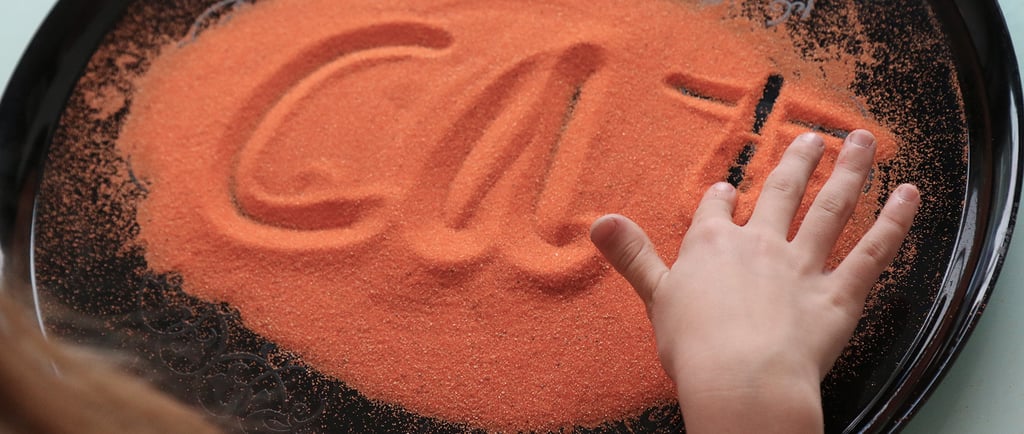Creative Multisensory Activities for Dyslexic Learners
Creative Multisensory Activities for Dyslexic Learners For many children with dyslexia, traditional reading methods can feel frustrating and overwhelming. However, multisensory learning – using sight, sound, touch, and movement – can make reading and writing more engaging and effective


For many children with dyslexia, traditional reading methods can feel frustrating and overwhelming. However, multisensory learning – using sight, sound, touch, and movement – can make reading and writing more engaging and effective. By tapping into multiple senses, kids with dyslexia can strengthen connections in the brain, making it easier to grasp and remember new concepts.
Here are some creative, hands-on activities that combine fun with powerful learning strategies to support dyslexic learners.
Sand or Salt Tray Writing
Let kids practice writing letters, words, or phonics patterns in a tray filled with sand, salt, or even shaving cream!
How to do it:
Pour a thin layer of material into a tray or plate. Say a letter or word aloud, and have your child “write” it with their finger while saying the sound or spelling.Why it works:
This combines tactile and visual input with kinesthetic movement, helping kids solidify letter shapes and sounds in memory.
Clap and Tap Syllables
Breaking words into syllables builds phonological awareness, a key skill for reading.
How to do it:
Say a word aloud (e.g., “elephant”), and have your child clap or tap their hands or drumsticks for each syllable (e.g., e-le-phant).Why it works:
This engages auditory, visual, and kinesthetic senses, helping kids understand word structure and rhythm.
Textured Flashcards
Make learning phonics or sight words more interactive with textured materials.
How to do it:
Write words or letters on cards using glue, then sprinkle sand, glitter, or fabric over the glue. Let it dry, and have your child trace the letters while saying the sounds.Why it works:
The tactile sensation reinforces memory and builds letter recognition.
Role Play Reading
Turn reading practice into a performance!
How to do it:
Assign characters from a short story, script, or even a decodable text. Have your child read aloud with expression, acting out the story as they go.Why it works:
This integrates reading with movement, emotion, and fun, improving fluency and comprehension.
Word Building with Letter Tiles or Magnets
Manipulating letters physically helps reinforce phonics skills.
How to do it:
Provide letter tiles or magnetic letters. Call out a word (e.g., “ship”), and have your child build it. Then, change one letter to make a new word (e.g., “shop,” “slip”).Why it works:
This supports understanding of sound-letter relationships and promotes flexible thinking about word structure.
Final Thoughts
Multisensory activities aren’t just fun—they’re an essential tool for dyslexic learners. By combining movement, touch, sound, and sight, these strategies build stronger neural pathways for reading and writing. Whether you’re a parent, teacher, or tutor, try adding these creative ideas to your reading routine and watch your child’s confidence grow!
Need Help Choosing the Right Program?
As an Orton-Gillingham tutor and classroom teacher, I can help you choose the best learning tools and strategies for your child — whether you're supplementing school or building a home learning routine.
👉 Or check out: What is Orton-Gillingham and Why It Works for Dyslexia?
I'd love to chat.
Tell me a little bit about your child and a few of your concerns or struggles (E.g., reading, spelling, vocabulary skills, letters and sounds, etc.)


